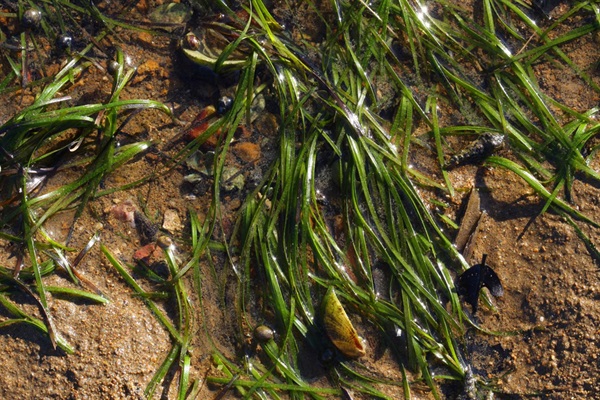Seagrasses are not true grasses but the only flowering plants surviving wholly submerged in coastal waters. Like others plants, seagrasses rely on sunlight to convert carbon dioxide into energy via photosynthesis. As such, they only thrive in clear, shallow waters. When the conditions are favourable, seagrasses can grow extensively, creating an ecosystem known as the seagrass bed. Seagrass beds can help to stabilise coastlines, and serve as shelters and feeding grounds for a variety of animals such as fishes, crabs, gastropods, horseshoe crabs and turtles.
The seagrass beds in Hong Kong are generally small and sporadic, and normally co-exist with mangroves. These beds are usually dominated by one species. Five seagrass species occur locally, and they are Beccari's Halophila (Halophila beccarii), Oval Halophila (H. ovalis), H. minor, Widgeon Grass (Ruppia maritima) and Dwarf Eel Grass (Zostera japonica). Among them, Oval Halophila is the most widely distributed species, which can be found on soft shores in both the eastern and western territories. On the other hand, Widgeon Grass is rarest species in Hong Kong being recorded only in Mai Po Nature Reserve.





